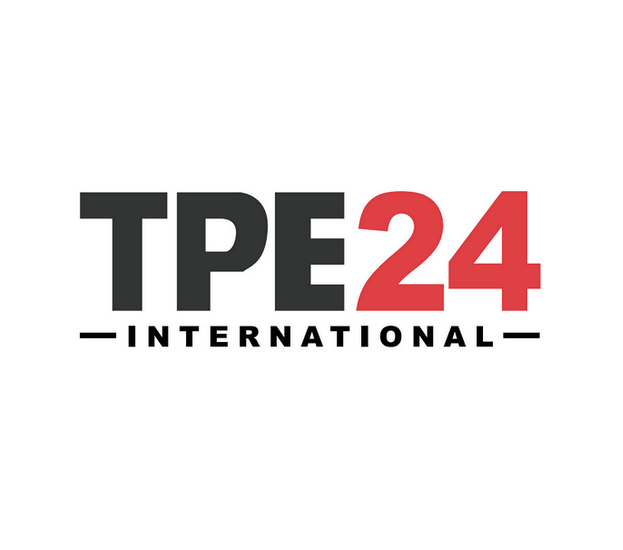E-cigarette Regulations: Unpacking Vape Rules in Spain

15 August 2023

1. Introduction
The vaping and e-cigarette industry has witnessed remarkable growth in recent years, offering an alternative to traditional tobacco products. This surge, however, has been accompanied by mounting concerns regarding its potential health implications, particularly among young users.
In response to these concerns, regulatory bodies in various countries are crafting policies to address the rapidly evolving landscape of vaping. Spain, too, has stepped into this arena with its own set of regulations.
This article aims to dissect the vaping rules in Spain, shedding light on how the country navigates the delicate balance between allowing vaping as a harm reduction tool and safeguarding public health.
2. Vaping and E-cigarette Regulations in Spain
Spain has adopted a comprehensive approach to regulating vaping and e-cigarette products, aiming to strike a balance between enabling harm reduction for smokers and protecting public health. The country's regulations encompass various aspects of the vaping industry.
- Age restrictions on purchasing and using vaping products: First and foremost, age restrictions play a crucial role in controlling vaping product access. In Spain, individuals under the age of 18 are prohibited from purchasing and using vaping devices and e-cigarettes. It aligns with efforts to prevent young people from initiating nicotine use and becoming potential long-term users.
- Packaging and labeling requirements for vaping products: Packaging and labeling requirements ensure that consumers are well-informed about the contents and potential risks associated with vaping products. Manufacturers must provide clear and accurate information on product labels, including ingredient lists, nicotine content, and health warnings. It empowers consumers to make informed decisions while also discouraging misleading marketing practices.
- Advertising and marketing restrictions for vaping products: Spain has implemented stringent advertising and marketing restrictions to curb excessive promotion and prevent the normalization of vaping. These restrictions limit how vaping products can be advertised, especially in mediums that could reach a younger audience. It includes prohibitions on advertisements that may associate vaping with glamour, excitement, or success.
- Limitations on nicotine content and product ingredients: Spain limits nicotine content and product ingredients to ensure that vaping products are not excessively addictive or harmful. Nicotine-containing liquids are subject to maximum concentration levels, and certain ingredients that might pose health risks are banned from vaping products.
Spain's vaping and e-cigarette regulations encompass age restrictions, packaging and labeling requirements, advertising limitations, and controls on nicotine content and ingredients. This multifaceted approach underscores the country's commitment to reducing the potential risks associated with vaping, particularly among the youth, while offering a harm reduction avenue for current smokers.
3. Health Concerns and Public Perception
Once hailed as a less harmful alternative to traditional smoking, vaping has raised significant health concerns, prompting an in-depth examination of its potential risks. Research suggests that while vaping might be less harmful than smoking conventional cigarettes, it is not without health risks.
Numerous studies have explored the impact of vaping on respiratory health. One major concern is the potential for lung irritation and inflammation. Some studies have found that the inhalation of certain chemicals present in vaping aerosols can lead to lung damage over time. Additionally, there have been cases of acute lung injuries caused by vaping, but they are rare. A long-term study of vaping's effects on lung health is still under investigation, but evidence points to potential risks.
The public perception of vaping and e-cigarettes in Spain is nuanced. Initially perceived as a promising tool for quitting smoking, concerns have grown due to reports of vaping-related health issues and the surge in youth uptake. Many individuals are skeptical about the safety of vaping products, viewing them as a potential gateway to nicotine addiction, particularly among young people. The perception of vaping's harm reduction potential is often weighed against the uncertain long-term health consequences it might entail.
Both scientific evidence and public sentiment have influenced efforts to regulate vaping. The Spanish public health authorities have been proactive in addressing these concerns. The government's regulatory measures reflect a cautious approach to balancing the potential benefits of vaping for adult smokers who want to quit with the need to protect youth and non-smokers from the harms of nicotine addiction and possible health risks associated with vaping.
Vaping has sparked health concerns in Spain, particularly regarding respiratory health and its appeal to young people. The country's public perception of vaping is evolving, influenced by scientific findings and emerging evidence of potential risks. Spain's regulatory framework addresses these concerns by balancing harm reduction and safeguarding public health. Ongoing research will likely play a crucial role in shaping both public perception and regulatory decisions surrounding vaping in the country.
4. Recent Developments in Vape Regulations
Spain has experienced recent shifts in its vaping regulations to address emerging health concerns and align with broader European standards. These developments have been influenced by the European Union's Tobacco Products Directive (TPD), which has played a pivotal role in shaping vaping regulations across member states.
Under the TPD, Spain has implemented stricter vaping product packaging and labeling requirements. It ensures consistent information for consumers and enhances awareness about potential risks associated with vaping. Additionally, advertising restrictions have been tightened, particularly in mediums that could target young audiences.
Spain's approach to vaping regulations demonstrates a certain convergence compared to neighboring countries. France, for instance, has enacted similar advertising restrictions and packaging rules, reflecting the shared commitment to protecting public health and youth. While pursuing its own regulatory path, Portugal shares the overarching goal of minimizing potential harm from vaping products, especially among young people.
Spain's recent vaping regulations showcase the influence of the EU's TPD, resulting in stricter packaging, labeling, and advertising controls. The comparative analysis highlights the region's united drive to regulate vaping products responsibly, safeguarding both current smokers seeking harm reduction and non-smokers, particularly the youth, from the potential adverse effects of vaping.
5. Positive and Negative Impacts of Vaping Restrictions
Vaping regulations in Spain have yielded both positive and negative consequences, spanning public health, the vaping industry, and unforeseen outcomes.
On the positive side, vaping regulations have contributed to enhanced public health by curbing youth initiation and potential nicotine addiction. Stricter age restrictions and advertising limitations help deter young individuals from trying vaping products, reducing the likelihood of future tobacco use. Clear packaging and labeling requirements empower consumers to make informed choices and grasp the potential risks.
However, the vaping industry and related businesses have experienced economic impacts. Stringent regulations may challenge smaller businesses in complying with packaging, labeling, and advertising requirements, potentially leading to financial strains and market consolidation. Furthermore, limitations on nicotine content and product ingredients can affect innovation and product diversity, altering consumer preferences.
Unintended consequences can emerge as well. While regulations intend to minimize harm, they might inadvertently push some users back toward traditional smoking if access to vaping products becomes overly restricted. Moreover, black market activities might increase if regulations drive users to seek unregulated products.
Vaping regulations in Spain have a mixed impact. They improve public health outcomes by deterring youth initiation and promoting informed consumption. However, economic and unintended consequences underscore the need for a balanced approach that considers both harm reduction and industry sustainability, alongside vigilant monitoring and adjustments to navigate potential negative outcomes.
6. International Perspectives
When examining vaping regulations in Spain, taking a look at other countries' approaches is insightful. Various nations have implemented a spectrum of regulations, offering valuable insights into more stringent and lenient regulatory frameworks.
Countries such as the United Kingdom and New Zealand have embraced harm reduction principles, encouraging smokers to vape since it is a safer alternative to smoking. Their regulations focus on ensuring product quality and safety while allowing relatively lenient advertising to support smokers in transitioning away from traditional tobacco products.
Conversely, countries like Australia have adopted more stringent regulations with a strong emphasis on public health protection. Vaping nicotine is heavily restricted, and advertising is tightly controlled to prevent normalization, especially among youth.
These international perspectives offer valuable lessons. The UK and New Zealand approach underscore harm reduction strategies' potential benefits, showing that well-regulated vaping can aid smoking cessation. On the other hand, Australia's caution highlights the importance of balancing harm reduction and safeguarding public health, particularly among young people.
Spain can draw from these diverse approaches to refine its own regulations. A balance that acknowledges the potential for harm reduction while addressing public health concerns is essential. Crafting rules that align with emerging scientific evidence and considering the dynamics of Spain's population can help guide effective policies for the benefit of both current smokers and society at large.
Improve Your Vape Brand with TOP Vape OEM/ODM Manufacturer
ALD Vapor, a global leader in vaping industry, is professional in providing one-stop OEM/ODM atomization solutions for vape brands from all over the world since 2009. With over 14 years of experience, over 4000 workers, and 6 factory sites, the company has gained a great reputation among clients and a fast-growing market share.
Conclusion
In dissecting the vape regulations in Spain, several crucial insights have emerged. Spain's approach involves a comprehensive set of regulations to strike a balance between harm reduction for smokers and protecting public health, particularly among the youth.The impact of the European Union's Tobacco Products Directive (TPD) has influenced Spain's vaping regulations, ensuring consistency across member states regarding packaging, labeling, and advertising restrictions.
As readers, staying well-informed about vaping regulations and health developments remains paramount. Ongoing research sheds light on potential risks and benefits associated with vaping, empowering individuals to make informed decisions regarding their health.
The journey of regulating vaping products underscores the importance of finding an equilibrium between regulation and personal choice. While regulations play a vital role in mitigating potential harms, allowing informed choice ensures that harm reduction efforts do not inadvertently hinder the accessibility of safer alternatives.
Spain's vaping regulations reflect a nuanced strategy to navigate the complexities of the vaping industry. By advocating for informed decision-making and evidence-based policies, we can collectively contribute to a healthier future for both individuals and society as a whole.

























